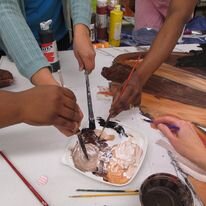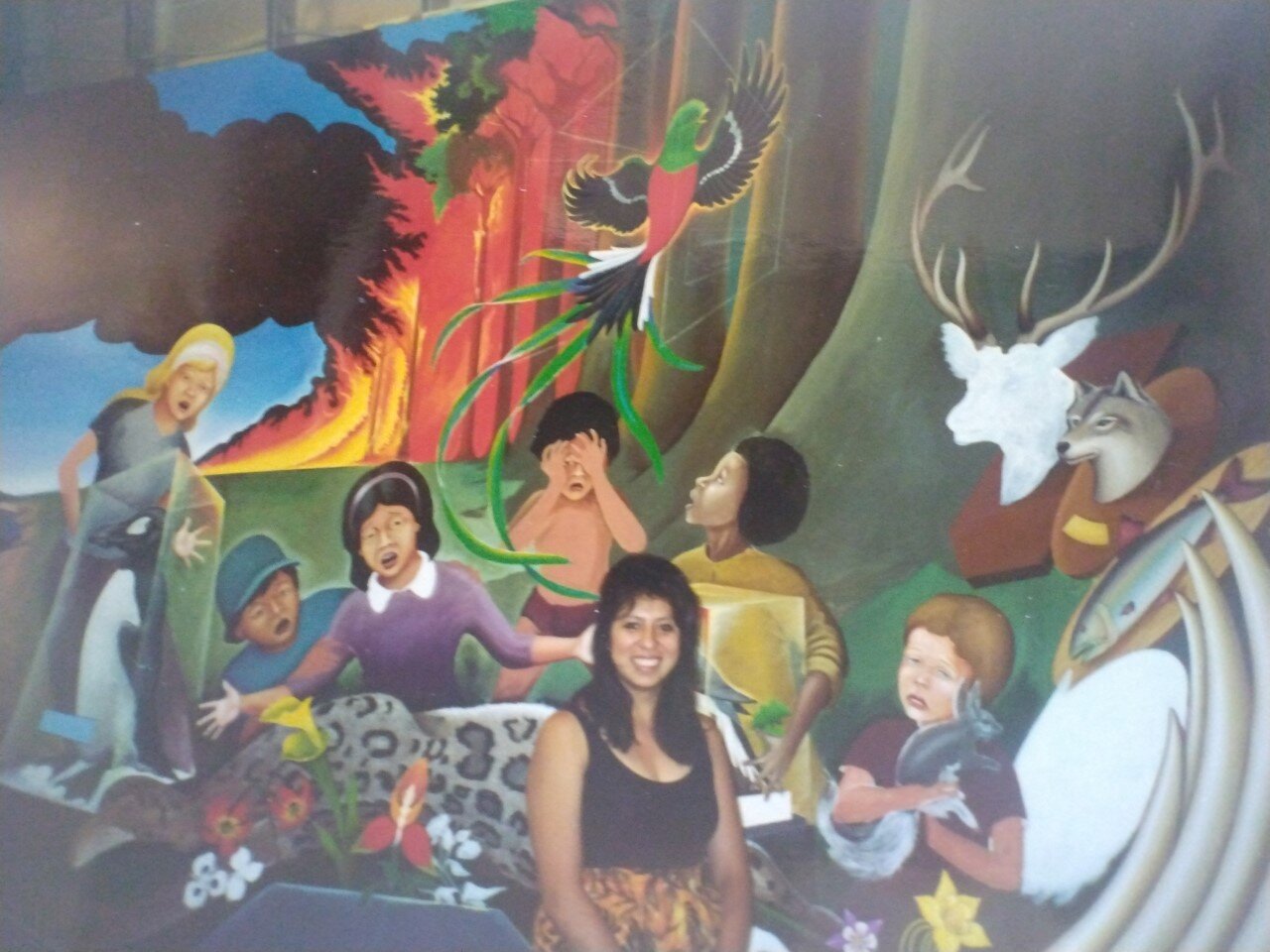'Art is a chance at redemption,' Local artist shares how art got her through her darkest chapters

DENVER — Cristal Darlina has lived many lives: a loyal daughter, loving mother, survivor of domestic violence and homelessness, community builder, the list goes on. But throughout her many chapters, one throughline remains. At her core, Darlina is an artist.
Unfortunately, the murals they put so much heart into became the focal point of many off-target conspiracy theories - theories that have caused Darlina and her father to face years of harassment and threats.
“I think rumors like that,about the airport conspiracies and the mural conspiracies, they really seek to destroy the human connection, the human spirit,” Darlina concluded, “But I want to create artwork that will bring us together so that we could see each other's human spirit and have that connection.”
Supporting other while in need of support
During this time, Darlina was working various jobs to support herself and her young daughter. Some of those included working with children, others working with people facing addiction.
No matter the role, two themes remained: helping others,and art. She often found herself doodling or finding other means of creating art to help herself and others heal.
“I would draw, and I would invite them to draw their own portrait so that they could see their own beauty and their own light,” she ruminated.
While Darlina was spending her days in service to her community, she was experiencing trials of her own. Darlina was facing domestic violence. Her partner was controlling and violent, and didn’t approve of her creating art.
“He took out my artwork and destroyed some of the paintings that I was doing for other people. And and so that that was very hurtful. That did it,” she concluded.
The women Darlina worked with who were facing addiction helped her commit to breaking free from the violence.
“I would see women come in with paint, gold spray paint all over them because they were huffing the paint. And that was kind of a reflection maybe what I would become,” she said. “As I was drawing them and talking with them, making that human connection, drawing with the children, I left him because I knew he was going to kill me or my daughter.”
Darlina says that this was a major turning point for her, and it became even more clear the importance art had in her life.
“The people that I met, like that woman with the gold spray paint all over her and the children, they helped me realize, wow, art is so powerful, it's helping me heal,” she said.
Repainting the Future
In 2013, this harrowing chapter would inform a mural Darlina created bringing awareness to the struggle of domestic violence.
The mural, entitled “Repainting the Future,”was in collaboration with a friend of Darlina’s, who at the time was a professor of Peace and Justice Studies.
The two of them gathered collaborators on the piece that fit in one of 3 categories of domestic violence.

The first category represented people who were still being targeted, the second, people who had survived, and the final category: people who were thriving afterwards. “They realized, ‘hey, we have the right to be safe without this violence and to have good life,’” Darlina said.
The small-but-mighty community gathered regularly at Cleo Parker Robinson Dance to paint the mural.
Despite her deep love for the project, depression and homelessness forced Darlina to take a jigsaw to pieces of the mural. She had lost her apartment due to rapid rent increases, and wouldn’t have anywhere to store it.
A chance at redemption
Miraculously, a friend introduced Darlina to the Reach program at RedLine Denver just in time to save the remainder of the mural. She informed Darlina that the gallery had a studio open to the community, and that they might have space for the mural. RedLine accepted the mural, and Darlina, with open arms.
10 years later, Darlina remains an integral part of the RedLine Core Artist program, serving as an artist and a mentor.
“What draws me to Reach is not the space. It's other my fellow artists that that are there,” she explained. “It's just great to be a part of a community as we all grow together, doing art and welcoming other people to the community as well.”
Not surprisingly, art continued to follow Darlina through her darkest moments. She spent long nights at Tom’s Diner drawing on napkins, and some chilly ones drawing on the frozen windows of the car she was sleeping in.
“I kept art alive… or it kept me alive, actually.” Darlina reflected.
Through community support, public services and very, very hard work, Darlina was able to find stable housing.
Now, she’s proud to be a full time artist. She spends her time painting pieces in the well-lit studio her daughter and son-in-law created for her in their home, connecting and creating at RedLine, and working with various nonprofits helping others who have faced similar traumas in their lives.
Through community support, public services and very, very hard work, Darlina was able to find stable housing.
Now, she’s proud to be a full time artist. She spends her time painting pieces in the well-lit studio her daughter and son-in-law created for her in their home, connecting and creating at RedLine, and working with various nonprofits helping others who have faced similar traumas in their lives.
“The kind of advice I would give to to other artists is know to believe in who you are and who you are will be reflected in your artwork,” she said.
Darlina concluded, “Art is a chance at redemption.”
Elle Naef is a digital media producer at Rocky Mountain PBS. You can reach her at ellenaef@rmpbs.org.
Alexis Kikoen is the senior producer at Rocky Mountain PBS. You can reach her at alexiskikoen@rmpbs.org.
Darlina was born in Baytown, Texas. She, her father and her two brothers moved to Colorado shortly after her beloved mother Ruby died of cancer in 1983. Darlina was just 16 years old.
Her artist name, Cristal Darlina, is in honor of her late mother who shared with her that she had originally wanted to name her Crystal, to accompany her name Ruby. Cristal used the Spanish version to honor her family's legacy even more deeply.
Darlina’s father Leo Tanguma was a muralist, and still draws today at 80 years old.
His murals focused on social justice, and addressed topics like police brutality and white supremacy.
“He was painting images of the KKK, which was on a building that I saw right in the area of town that we lived in, and they burned down my father's art studio,” she recalls
Darlina’s deep loyalty to her father is clear. She smiled warmly when reminiscing on how they bonded over a mutual love for art.
Darlina says she learned her painting techniques by simply observing Tanguma. “We would walk, him and I, to his studio or to giant murals that he was doing,” she said. “He never actually sat me down and said, ‘this is how you draw’. It's more of an observation.”
Together, the two of them would create various pieces addressing societal issues. This is where Darlina developed her purpose for creating art, which she described as “using art to give voice to different types of struggles and injustices, and also to give hope.”
One of the most notable works Darlina and her father created was the series of murals in Denver International Airport entitled “Children of the World Dream of Peace.” The depictions on the murals were originally meant to share themes around unity, justice and connection.
Related Stories
